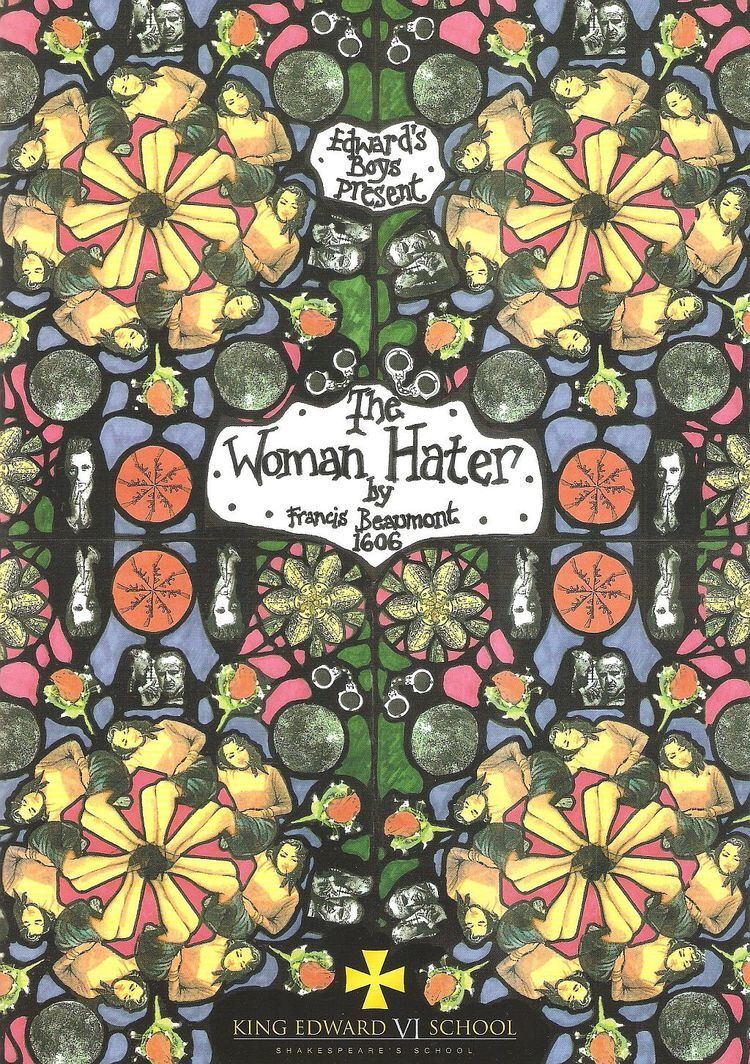 | ||
John Fletcher plays The Scornful Lady, A King and No King, Beggars' Bush | ||
The Woman Hater is an early Jacobean era stage play, a comedy by Francis Beaumont and John Fletcher. One of the earliest of their collaborations, it was the first of their plays to appear in print, in 1607.
Contents
Date and publication
The play was entered into the Stationers' Register on 20 May 1607, and was published later that year in quarto by the bookseller John Hodgets. A second imprint of the first quarto was issued in the same year. The title page offers no assignment of authorship. A few critics have suggested a 1605 date for the play, but most favor a date of 1606.
A second quarto was issued in 1648 by Humphrey Moseley, with an attribution to Fletcher. The second imprint of this second quarto, issued in 1649, assigned the play to both Beaumont and Fletcher and added a subtitle to the play, calling it The Woman Hater, or The Hungry Courtier.
Like other previously-published plays, The Woman Hater was omitted from the first Beaumont and Fletcher folio of 1647. The play was later included in the second Beaumont/Fletcher folio in 1679.
The song "Come, Sleep" from Act III has been anthologized under the title "Sleep" and often set to music by later composers.
Performance
The title page of the first quarto states that the play was acted by the Children of Paul's, a company of child actors that is thought to have ceased activity after the summer of 1606.
Authorship
The consensus of critical judgement accepts the play as a Beaumont and Fletcher collaboration in which Beaumont's is the dominant hand. Cyrus Hoy, in his survey of authorship problems in the canon of Fletcher and his collaborators, provided this breakdown of the two authors' respective shares:
Beaumont — Act I; Act II; Act III, scenes 2-4; Act IV, 1; Act V, 1, 3, and 4;Beaumont and Fletcher — Act III, scene 1; Act IV, 2 and 3; Act V, 2 and 5.Fletcher revised five scenes in Beaumont's play, scenes that deal with the chastity test. This dramaturgic element was a preoccupation with Fletcher, and recurs in his plays with Beaumont and other collaborators and his solo works as well. Other critics have agreed in substance, though not in all particulars, with Hoy's division.
Psychology
Critics have commented on the play's curious juxtaposition of two unrelated portrayals of obsessive psychology. In the main plot, Gondarino is a dedicated misogynist who strives to avoid any and all contact with women. The primary subplot traces Lazarello's obsessive quest for, of all things, a really nice piece of fish. "Beaumont juggles four plots with considerable ease, offering a bit of something for everyone: farce, bawdy wit, court satire, and a 'high' romantic plot."
Language
This play has the earliest attested usage of a number of words and phrases in the Oxford English Dictionary, including:
